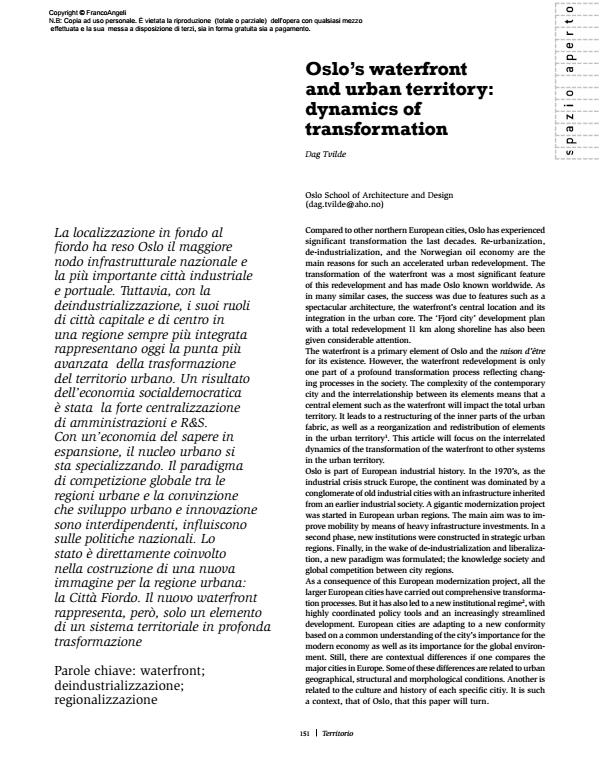Oslo’s waterfront and urban territory: dynamics of transformation
Journal title TERRITORIO
Author/s Dag Tvilde
Publishing Year 2011 Issue 2011/56
Language English Pages 7 P. 151-157 File size 919 KB
DOI 10.3280/TR2011-056023
DOI is like a bar code for intellectual property: to have more infomation
click here
Below, you can see the article first page
If you want to buy this article in PDF format, you can do it, following the instructions to buy download credits

FrancoAngeli is member of Publishers International Linking Association, Inc (PILA), a not-for-profit association which run the CrossRef service enabling links to and from online scholarly content.
Its location at the end of a fjord has made Oslo the largest national infrastructure hub and Norway’s most important industrial city and port. Nevertheless, with deindustrialisation, its roles as city capital and the centre of an increasingly more integrated region represent the most advanced state of the transformation of urban areas. One result of the social democratic economy was the strong centralisation of administrations and R&D. With an expanding knowledge economy, the urban centre is specialising. The paradigm of global competition between urban regions and the conviction that urban development and innovation are interdependent, is influencing national policies. The state is directly involved in the construction of a new image for the urban region: Fjord City. The new waterfront, however, represents just one element in an urban and regional system that is changing profoundly.
Keywords: Waterfront; deindustrialisation; regionalisation
Dag Tvilde, Oslo’s waterfront and urban territory: dynamics of transformation in "TERRITORIO" 56/2011, pp 151-157, DOI: 10.3280/TR2011-056023